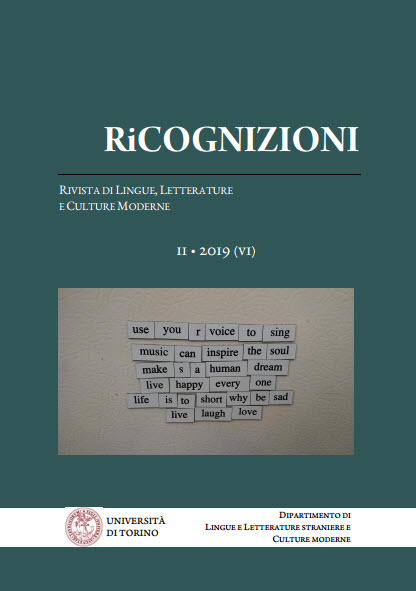SULLA METRICA DEL VERSO LIBERO
DOI:
https://doi.org/10.13135/2384-8987/3294Parole chiave:
Free verse, Italian poetry, Metrics, Poetry and Music.Abstract
The essay examines the "free verse" of modern Italian poetry, hypothesizing that two general tendencies have followed one another: in the first phase it was possible to overcome the traditional prosody – based above all on the Leopardi model – while maintaining its rhythmic characteristics, in particular in the first part of the lines. In a second phase, a versification based on accents and not on syllables became more important. This change can be traced back to a change in collective prosodic competences, due to the definitive affirmation of the typical forms of tonal music. The hypothesis is also verified through the analysis of the recordings of the poets who read their poems, using the material preserved in the websites "VIP" and "Lyrikline". This feedback – which must be made with all the necessary caution – is nevertheless essential when trying to analyze a versification based on accents and not on syllables, also because it is not suited to the natural rhythm of the Italian language.
##submission.downloads##
##submission.additionalFiles##
Pubblicato
Come citare
Fascicolo
Sezione
Licenza
Gli autori che pubblicano su questa rivista accettano le seguenti condizioni:- Gli autori mantengono i diritti sulla loro opera e cedono alla rivista il diritto di prima pubblicazione dell'opera, contemporaneamente licenziata sotto una Licenza Creative Commons - Attribuzione che permette ad altri di condividere l'opera indicando la paternità intellettuale e la prima pubblicazione su questa rivista.
- Gli autori possono aderire ad altri accordi di licenza non esclusiva per la distribuzione della versione dell'opera pubblicata (es. depositarla in un archivio istituzionale o pubblicarla in una monografia), a patto di indicare che la prima pubblicazione è avvenuta su questa rivista.
- Gli autori possono diffondere la loro opera online (es. in repository istituzionali o nel loro sito web) prima e durante il processo di submission, poiché può portare a scambi produttivi e aumentare le citazioni dell'opera pubblicata (Vedi The Effect of Open Access).








